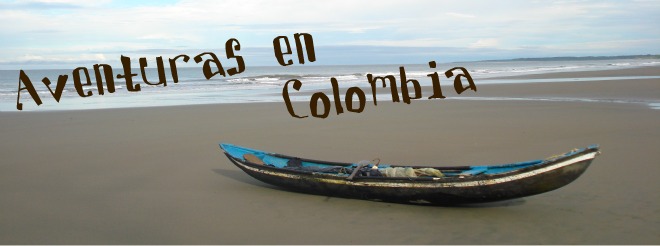 |
| El Transito winery |
Cafayate is a quiet town located in the southern part of the Salta province. Many tourists stop here for the afternoon on day trips from the city of Salta or just passing through. The thing about Cafayate is that it is located in the stunningly beautiful Calchaquines Valley, surrounded by gently majestic sandy-brown and cobalt-hued mountains, clear skies (it is sunny 340 days a year), and the contagious ease of small town life.
We were fortunate enough to ride in the front of the bus on
the 3 hour ride through the Quebrada Canyon from Salta to Cafayate. Normally we all passed bus time reading
or napping, but the closer we got to our destination, the more magnificent the
scenery; it seemed rude to concentrate on anything else!
The Grape is Made of Wine
Another plus of visiting Cafayate if you want to learn about
wine and wine production is that there are not only a large handful of
vineyards within town limits – Mendoza’s were all a bikeable distance into the
countryside – or right outside, but it is also home to the notable El Museo de
la Vid y el Vino (Wine and Vine Museum).
While I was mostly in awe over the intensity, attention to
detail, and rigorous schedule a grape farmer must possess, I also walked away
with a few other “did you knows?” including:
- The first vineyards in Chile and Argentina were started by Jesuit priests as a way to have a supply of wine for church services’ communions.
- Wine should be stored on its side so that the cork is in contact with both the wine itself and the air outside the bottle. Its chemistry.
- Speaking of corks, the longer it is, the better quality the wine is (usually).
- Of the world’s productive wine-producing regions, Argentina has all of those located at the highest elevations. (Malbec and Cabernet grape varieties, among other lesser known ones like Torrantes and Bonarda, have become famous here because they grow best in such conditions.)
- The
larger the vessel, the longer the wine will maintain its intended
flavor. So, therefore,
mini-bar bottles of wine are risky.
Desert Fruits
If Argentina as a whole is famous for steak, Cafayate and
the surrounding region are famous for their tasty empanadas. We had read this somewhere prior to our
visit so we saved extra room each day to sample as many kinds as we could. My favorite, though I can happily claim
that I never had a bad one, was filled with goat meat, cheese, and
spinach. I may have had three.
 |
| Wine-flavored ice cream! |
Beautiful Disaster
Our second day in Cafayate ended with the words “I may have
done some foolish things today.”
While we all committed to renting bicycles for the day, my four travel
companions decided to backtrack to the road through the Quebrada we came in on
the day before and visit some of the spectacular canyon formations. They hopped on a tour bus leaving town
and were dropped off about 50 km later to begin the rolling journey back.
I, on the other hand, opted to visit an ancient
archeological site known as Quilmes, named for the indigenous people who
resided there back around the time the Incas were conquering South
America. The Quilmes are the only
known population to have not been conquered, while remaining within Inca
territory; the Incas just never found them!
 |
| The open road: so little traffic on the road I had plenty of time to set up this self timed shot. A blessing here, a curse later... |
The lady at our hostel told me the ride would be “around 50
km round trip” and “very flat.”
After confirming this understanding with her again, and having the
hostel janitor nodding in agreement behind her, I headed out with my two
bottles of water, confident in the day ahead! 57 km later I arrived
at Quilmes, convinced that this was not a matter of “lost in translation,” but
sabotage.)
 |
| Quilmes |
The site was what you would expect from an archeological
site in the desert this old.
Hip-high walls of tightly packed rocks climbing a mild slope for a clear
vantage point of the valley nicely summarizes the layout of what remains.
My legs were already a little weak as I left the ruins at Quilmes;
57 km is a long way to bike after not having ridden since last summer. About 20 km later, sun beating down, I
realized this needed to end. There
are essentially two blink-and-you-miss-them towns along the way, open roads
with few passing vehicles, and lots of hot, dry, sunny desert. I stocked up on water at the first of
the two towns and pushed on, literally.
After about an hour of walking my bike up rises and coasting
down declines, waving at passing vehicles (only non-cars since I had a bike),
and thinking about how badly burned my exposed leg would be later, a nice
farmer and his wife pulled their pick-up over on the side of the road and
offered me a ride.
 |
| What successful hitch-hiking looks like. |
A little over six hours later I stumbled back into our hostel only to find the rest of my
cohorts had also recently returned.
It turned out we had some similar experiences: Kelsi’s chain broke 2km
into their day and she had to hail a passing La Posada tour van; Rob got behind
Kristin and Narissa when his bike malfunctioned and ended up walking 25km. Rob and I both learned that single male
gringos with bikes on the side of
the road make people more inclined to wave but not stop.
Despite all this, pretty bad burn on my left leg and backs
of my hands included, Cafayate won all of us over!

















